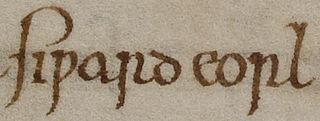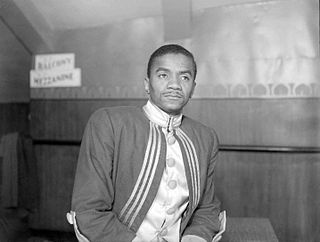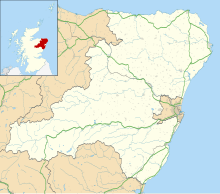Lulach mac Gille Coemgáin was King of Scots between 15 August 1057 and 17 March 1058.
Macbeth was King of Scots from 1040 until his death. He ruled over the Kingdom of Alba, which covered only a portion of present-day Scotland.
Malcolm III was King of Scotland from 1058 to 1093. He was later nicknamed "Canmore". Malcolm's long reign of 35 years preceded the beginning of the Scoto-Norman age. Henry I of England and Eustace III of Boulogne were his sons-in-law, making him the maternal grandfather of Empress Matilda, William Adelin and Matilda of Boulogne. All three of them were prominent in English politics during the 12th century.

Year 1057 (MLVII) was a common year starting on Wednesday of the Julian calendar.

Year 1054 (MLIV) was a common year starting on Saturday of the Julian calendar.

Edward the Confessor was one of the last Anglo-Saxon English kings. Usually considered the last king of the House of Wessex, he ruled from 1042 to 1066.

Donnchad mac Crinain was king of Scotland (Alba) from 1034 to 1040. He is the historical basis of the "King Duncan" in Shakespeare's play Macbeth.

Lord Macduff, the Thane of Fife, is a character and the main antagonist in William Shakespeare's Macbeth (c.1603–1607) that is loosely based on history. Macduff, a legendary hero, plays a pivotal role in the play: he suspects Macbeth of regicide and eventually kills Macbeth in the final act. He can be seen as the avenging hero who helps save Scotland from Macbeth's tyranny in the play.

Dunsinane Hill is a hill of the Sidlaws near the village of Collace in Perthshire, Scotland. It is mentioned in Shakespeare's play Macbeth, in which Macbeth is informed by a supernatural being, "Macbeth shall never vanquished be, until Great Birnam wood to high Dunsinane hill Shall come against him."
Gruoch ingen Boite was a Scottish queen, the daughter of Boite mac Cináeda, son of Cináed II. She is most famous for being the wife and queen of MacBethad mac Findlaích (Macbeth). The dates of her life are uncertain.

Siward or Sigurd was an important earl of 11th-century northern England. The Old Norse nickname Digri and its Latin translation Grossus are given to him by near-contemporary texts. It is possible Siward may have been of Scandinavian or Anglo-Scandinavian origin, perhaps a relative of Earl Ulf, although this is speculative and unclear. He emerged as a powerful regional strongman in England during the reign of Cnut. Cnut was a Scandinavian ruler who conquered England in the 1010s, and Siward was one of the many Scandinavians who came to England in the aftermath of that conquest. Siward subsequently rose to become sub-ruler of most of northern England. From 1033 at the latest Siward was in control of southern Northumbria, that is, present-day Yorkshire, governing as earl on Cnut's behalf.

Cairn O' Mounth/Cairn O' Mount is a high mountain pass in Aberdeenshire, Scotland. The place name is a survival of the ancient name for what are now the Grampian Mountains, earlier called "the Mounth". The name change happened from circa 1520 AD. The Ordnance Survey shows the name as Cairn o' Mount.
Moray was a province within the area of modern-day Scotland, that may at times up to the 12th century have operated as an independent kingdom or as a power base for competing claimants to the Kingdom of Alba. It covered a much larger territory than the modern council area of Moray, extending approximately from the River Spey in the east to the River Beauly in the north, and encompassing Badenoch, Lochaber and Glenelg in the south and west.

Lumphanan is a village in Aberdeenshire, Scotland located 25 miles (40 km) from Aberdeen and 10 miles (16 km) from Banchory.
Events from the 1050s in England.
Osbeorn, also spelled Osbjorn and Osbert, given the nickname Bulax, was the son of Siward, Earl of Northumbria. He is one of two known sons of Siward, believed to be the older. While it is normally assumed he was the son of Siward's Bamburgh wife Ælfflæd, it has been suggested by William Kapelle that Osbeorn's mother was not Ælfflæd. The nickname "Bulax" probably represents the Old Norse term for "Poleaxe".
Dunsinane is a 2010 play by David Greig. It premiered in a Royal Shakespeare Company production at the Hampstead Theatre from 10 February to 6 March 2010, directed by RSC Associate Director Roxana Silbert and with leads including Siobhan Redmond and Jonny Phillips.
The Treaty of Abernethy was signed at the Scottish village of Abernethy in 1072 by king Malcolm III of Scotland and William of Normandy.

Malcolm is a character in William Shakespeare's Macbeth. The character is based on the historical king Malcolm III of Scotland, and is derived largely from the account in Holinshed's Chronicles (1587), a history of Britain. He is the elder son of King Duncan, the heir to the throne, and brother to Donalbain. In the end, he regains the throne after mustering support to overthrow Macbeth.

The Battle of Dunsinane, also known as the Battle of the Seven Sleepers, was fought between the forces of Macbeth, King of Scotland and forces led by Siward, Earl of Northumbria and Malcolm Canmore on 27 July 1054. The battle was part of a campaign launched by Siward in support of Malcolm's claim to the Scottish throne, which Macbeth had gained after killing Malcolm's father, Duncan I of Scotland, in battle in 1040. Ending in victory for Siward and Malcolm the battle was fought in Perthshire, traditionally on Dunsinane Hill.










